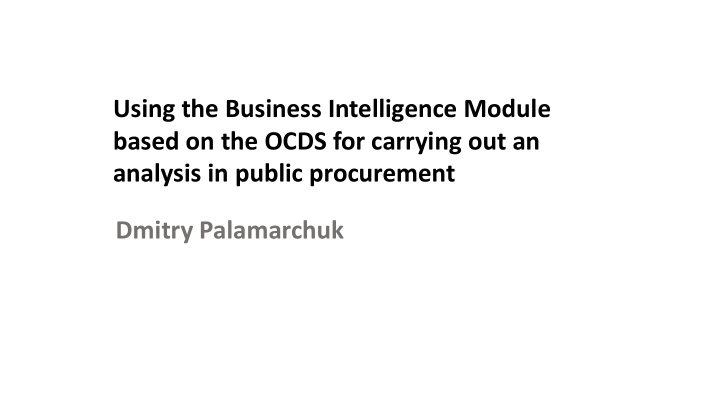



Using the Business Intelligence Module based on the OCDS for carrying out an analysis in public procurement Dmitry Palamarchuk
Everything starts with data…. data structure
OCDS implementation, the goal • Full coverage of the processes • Consistency • History of amendments • Data quality • Compliance with OCDS Objects, code lists, and extensions
What if we achieved the goal • Complex data structure • Tech oriented data format • Complexity of process flow interpretation • No catalogs • Access through API only
Does transparency help in this case? Transparency does not equal to Visibility!
How to achieve Visibility? “Business Intelligence is the delivery of accurate and valuable information, to key decision makers, "on demand." The purpose of which is not to answer the common questions, but instead to uncover new questions and find answers to questions you never thought you would ask.” From Quora.com
Business Intelligence dashboards
Users are public procurement stakeholders Operator of the NGO e-procurement system Public Procurement Agency Ministries Review Body Regulators (market regulators) Controlling authorities SOE’s with branches High-level government Treasury officials
Value • Powerful analytical engine is a MUST for an e-procurement system • Common ground in KPI’s and numbers for all stakeholders • Single point of analytical information • Data discovery approach instead of report approach • Different sources of information including analytical dimensions from various catalogs can be utilized • Dashboards customized for the stakeholder’s functions • Best practices of KPI’s and dashboards • Single point of data access in “readable” format (XLS, CSV) • Any Ad-hoc report in few clicks
Where to test? bi.prozorro.org/en
Questions dmitry.palamarchuk@gmail.com
Recommend
More recommend